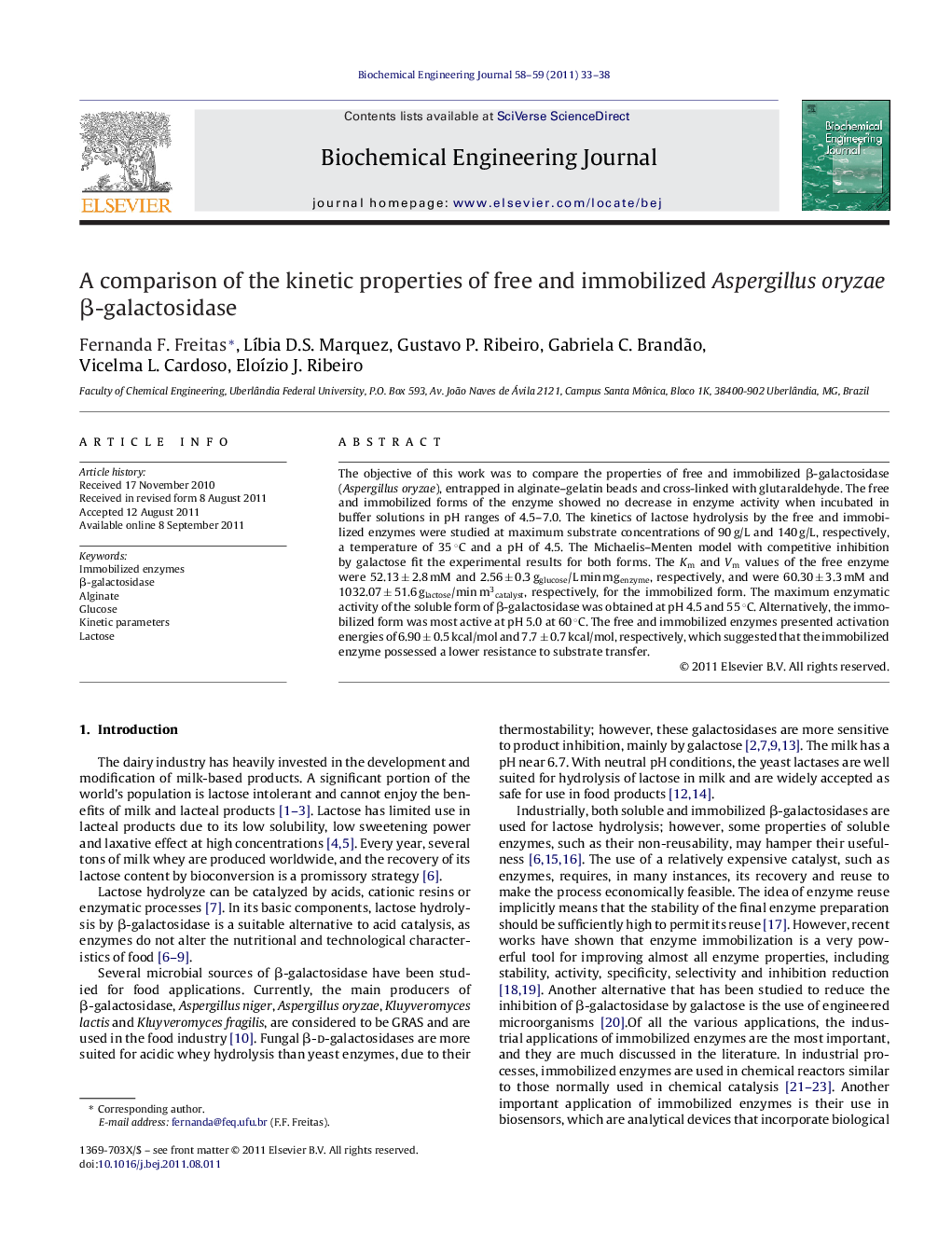| Article ID | Journal | Published Year | Pages | File Type |
|---|---|---|---|---|
| 3683 | Biochemical Engineering Journal | 2011 | 6 Pages |
The objective of this work was to compare the properties of free and immobilized β-galactosidase (Aspergillus oryzae), entrapped in alginate–gelatin beads and cross-linked with glutaraldehyde. The free and immobilized forms of the enzyme showed no decrease in enzyme activity when incubated in buffer solutions in pH ranges of 4.5–7.0. The kinetics of lactose hydrolysis by the free and immobilized enzymes were studied at maximum substrate concentrations of 90 g/L and 140 g/L, respectively, a temperature of 35 °C and a pH of 4.5. The Michaelis–Menten model with competitive inhibition by galactose fit the experimental results for both forms. The Km and Vm values of the free enzyme were 52.13 ± 2.8 mM and 2.56 ± 0.3 gglucose/L min mgenzyme, respectively, and were 60.30 ± 3.3 mM and 1032.07 ± 51.6 glactose/min m3catalyst, respectively, for the immobilized form. The maximum enzymatic activity of the soluble form of β-galactosidase was obtained at pH 4.5 and 55 °C. Alternatively, the immobilized form was most active at pH 5.0 at 60 °C. The free and immobilized enzymes presented activation energies of 6.90 ± 0.5 kcal/mol and 7.7 ± 0.7 kcal/mol, respectively, which suggested that the immobilized enzyme possessed a lower resistance to substrate transfer.
► We compare the properties of free and immobilized lactase from Aspergillus oryzae. ► Lactase was entrapped in alginate–gelatin beads and stabilized with glutaraldehyde. ► Temperature and pH effects on the enzymatic activity and kinetics were compared. ► Free and immobilized enzyme presented competitive inhibition by galactose. ► The immobilized enzyme presented a low resistance to substrate transfer.
